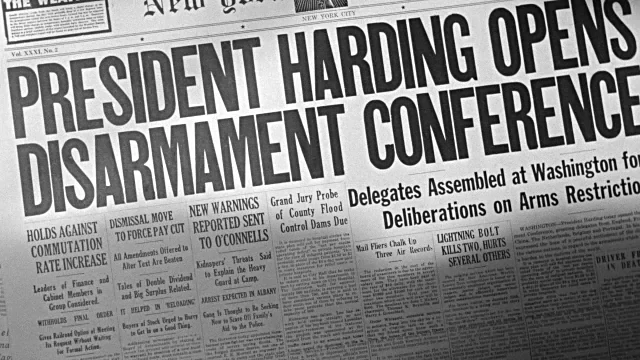In terms of content marketing or inbound marketing, the content of a web page takes on an almost decisive importance by virtue of the objectives set by SEO .
The quality of the content also plays an important role from the point of view of user experience and conversion.
In this article we talk about one of the elements of a web page’s content, the title.
In particular, we will see how to create one that can be valid at an SEO and SEM level.
Do you want to optimize your site for Google?
MONTHLY PAYMENTS AND PAY ONLY IF YOU ARE SATISFIED.
The importance of the title
Websites are editorial products.
The best definition of headline that can be given in this context, in my opinion, is the one properly used in the world of journalism .
The title consists of a short text that introduces an article and which incorporates the essential contents of a news story.
This applies in general to the article in a paper newspaper and to each page of a website.
On a web page the title contains the main keyword or key phrase of the content.
Generally the titles appear in larger fonts than the others used within the post or web page.
Both on the web and in a paper publication the title can be followed by a subtitle, a short description and keywords (still used in scientific publications).
Further specific elements of the web page are the meta tags (title and meta description).
Why the title is important for web marketing
The title of a content is relevant in all areas of web marketing. For example:
- in SEO to position a certain content on search engines,
- in SEM (think of the titles of an ADS ad)
- in social media marketing (the title of a Facebook or Instagram campaign post).
The Title in SEO
For Search Engine Marketing (SEO) the title represents one of the on-page positioning factors.
A web page normally contains two titles which do not necessarily have to be the same:
- title enclosed in the <title> tag: it is the one seen by the browser and search engines
tag: it is the one seen by the browser and search engines - title enclosed in the <h1> tag: present within the web page and seen by users.
The title <title> tag what it is and how to optimize it tag what it is and how to optimize it
The <title> tag is an HTML element that specifies the title of a web page. It is enclosed in <head></head> tags.
Code example
<head> <title>This is the title</title> </head>This title is eligible to be found by Google crawlers and become an integral part of the snippet of a search results page.
When we search for a keyword on Google, the search engine returns us a page with 10 organic positions on which titles, descriptions and links are displayed .
It can be understood, therefore, that the title must be designed first of all for visitors: they are the ones who will have to “click” on the title of the snippet to enter your website.
It must then be designed for search engines who must understand well what we are talking about.
After posting an article on social networks, the title becomes the most important part of the social content.
12 tips for creating an effective title
1.Title length
It is advisable to respect the character length that Google and other search engines reserve for the snippet title.
Google typically displays the first 50-60 characters of a <title> tag.
An unnecessarily long title will be cut off in the snippet and will be incomplete and not fully understandable.
I usually use this trick: I try to make a title no longer than 60 characters and putting at least 5 words in it and no more than 12.
For example, the title of the article you are reading is ” SEO Title: 12 tips for creating an effective title “. In this case the title is made up of 53 characters and 9 words.
2.Don’t try to cheat
It is necessary not to try to cheat: often thinking about Google, we try to create complex titles with little relevance to the text which have the opposite effect on the desired positioning.
3.Make short but meaningful titles
The title must be sufficiently clear, concise but at the same time significant of what the page is about.
4.Try adding the element of persuasion
The title must be sufficiently persuasive. Since it appears in search engine snippets, the persuasive element could help people click through to your website.
Example normal title: Learning web marketing
Persuasive title example: Do you really want to learn web marketing? That’s how.
5. Avoid keyword stuffing
Furthermore, it is bad SEO practice to repeat the main keyword several times in the title. But it works! You might say… sure, sometimes it works well but the visibility that keyword stuffing brings doesn’t last long.
6. The main keyword at the beginning
When building the title it is important to put the main keyword at the beginning. Below are the secondary keywords. In fact, it is good for the user to understand at first glance what we are talking about.
7.Use the pipe
Use the pipe: The “|” pipe it is a separator that divides the title into two distinct parts also in the eyes of the search engine and could be important to give a greater user experience.
8.Make a different title for each page
Often different pages are made with similar titles containing keywords considered important.
The rather erroneous belief is that repeating the same keywords on multiple pages improves the site’s positioning.
Unfortunately this is not the case: you only risk confusing visitors and search engines. So if your website has one hundred pages, each page needs to have a different title.
9.Use the brand sparingly
Is it good to put the brand in the title of the web page? It’s a good question. Google does not advise against it. Personally, I would evaluate on a case-by-case basis:
- home page: yes
- service page (e.g. about us): yes
- blog page: not always, to be evaluated. Consider that the brand “steals” available characters from a clearly visible title on the snippet of a Google search page.
10.Question and answer
When possible it could be useful to create a title with a question that intrigues the reader to read the content that constitutes the answer.
11.Advantages and benefits
indicate in the title the advantages that the visitor could have, for example. by purchasing a certain product or service described on the page.
12.Use figures
More and more often numbers are used in titles like “10 ways to make an effective title for SEO”.
Some advice is provided directly from the Google Search Console help here .
The title <h1> tag
The HTML <h1> title tag is a heading tag and is used for the title of a page or post.
This is the first visible heading on the page and is typically the visible title of the article.
In a web page the h1 tag can be followed by other headings which will be tagged as h2, h3, h4, h5 and h6.
They break the text of the document into smaller parts.
This title also has great importance for SEO. There can only be one h1 tag on a web page.
Example h1 tag code
<h1>This is the heading of the article</h1>Differences between the <h1> tag and <title> tag for SEO
The title tag is shown on the search results page as the snippet header.
The h1 tag is displayed to readers of the article or post on the web page.
The title tag is shown in the SERPS (search engine results pages). It is used as the main snippet heading in search results. It also represents a strong signal to crawlers about what the web page is about.
The importance of the h1 title for SEO
The h1 tag is also a signal for search engines.
It helps to better understand what the document is about as well as to a lesser extent the other h2…h6 headings.
Heading tags make the text they contain larger than the normal text on the page.
Users immediately understand that this is important text and also better understand the type of content reported under the header.
The use of headers is well regarded by search engines because it improves the user experience in using the content of the web page.
The H1 tag may be different or the same as the page title
However, many SEOs prefer to provide two different titles:
– one in the <title> tag for search results
– one in the <h1> tag visible to readers and among the most used plugins in WordPress for this effect is Yoast SEO.
Often the difference is using the main keyword in the < tag> tag and a related (or long tail ) word in the <h1> tag.
This is not always a correct solution and the SEO consultant will have to evaluate on a case-by-case basis by referring to the purpose of the web page.
Even for h1 tags it is recommended to use short and descriptive texts at the same time, allowing for a maximum of 60 characters.
If you need to specify further you can follow the main heading with a second h2 heading or better yet, a bold paragraph.
Google recommendations on h1…h6 headings
As we did some time ago, we summarize the salient points, referring the reader to the source :
- Create a hierarchical structure: Using headings with different sizes in order helps you create a hierarchical structure for your content. This helps users navigate the document more easily.
- Use headings on the page sparingly
- Do not insert text in heading tags that is not useful for defining the structure of the page.
- Don’t use heading tags where other tags, such as and , would be more appropriate.
- Don’t incorrectly switch between header sizes.
- Don’t use an excessive number of heading tags on a page.
- Don’t write very long headings.
- Don’t use heading tags just to style text and not to present structure.
Create a title for a landing page
SEOs often use landing pages to offer the user who lands an action which, once completed, generates a conversion.
The title is certainly among the most important elements of a landing page and the call to action contained in it. The Title and any subtitle must be fascinating and provoke persuasion.
Often the title is posed in the form of a question and answer, giving the visitor the feeling of having found the right place to solve their problem.
Create a title for social networks
When we share a post on social networks, the title of the article is the first thing after the image that appears in the opengraph.
So also in this case you need to pay attention to effective titles for your posts by working on the copy.










